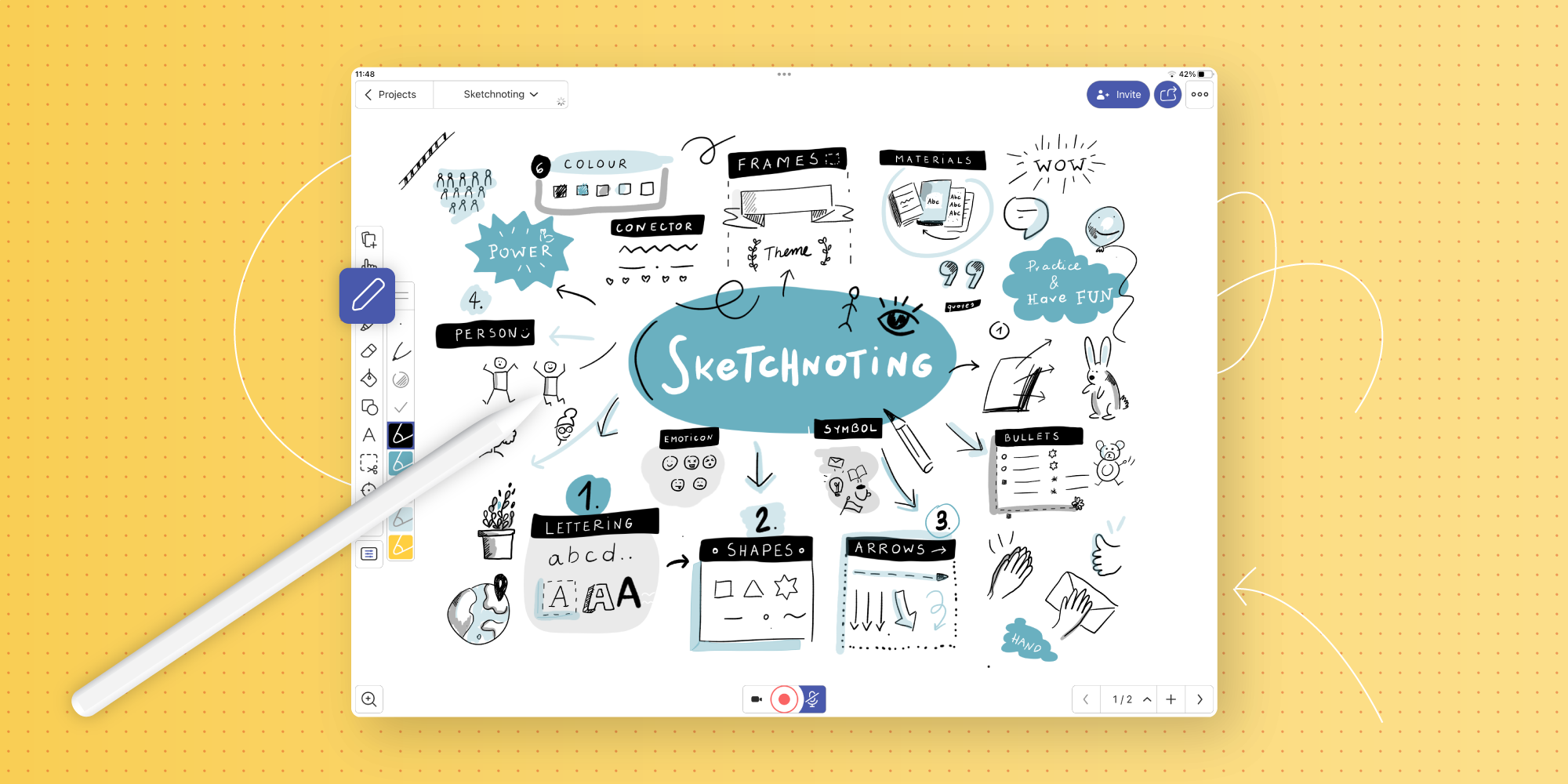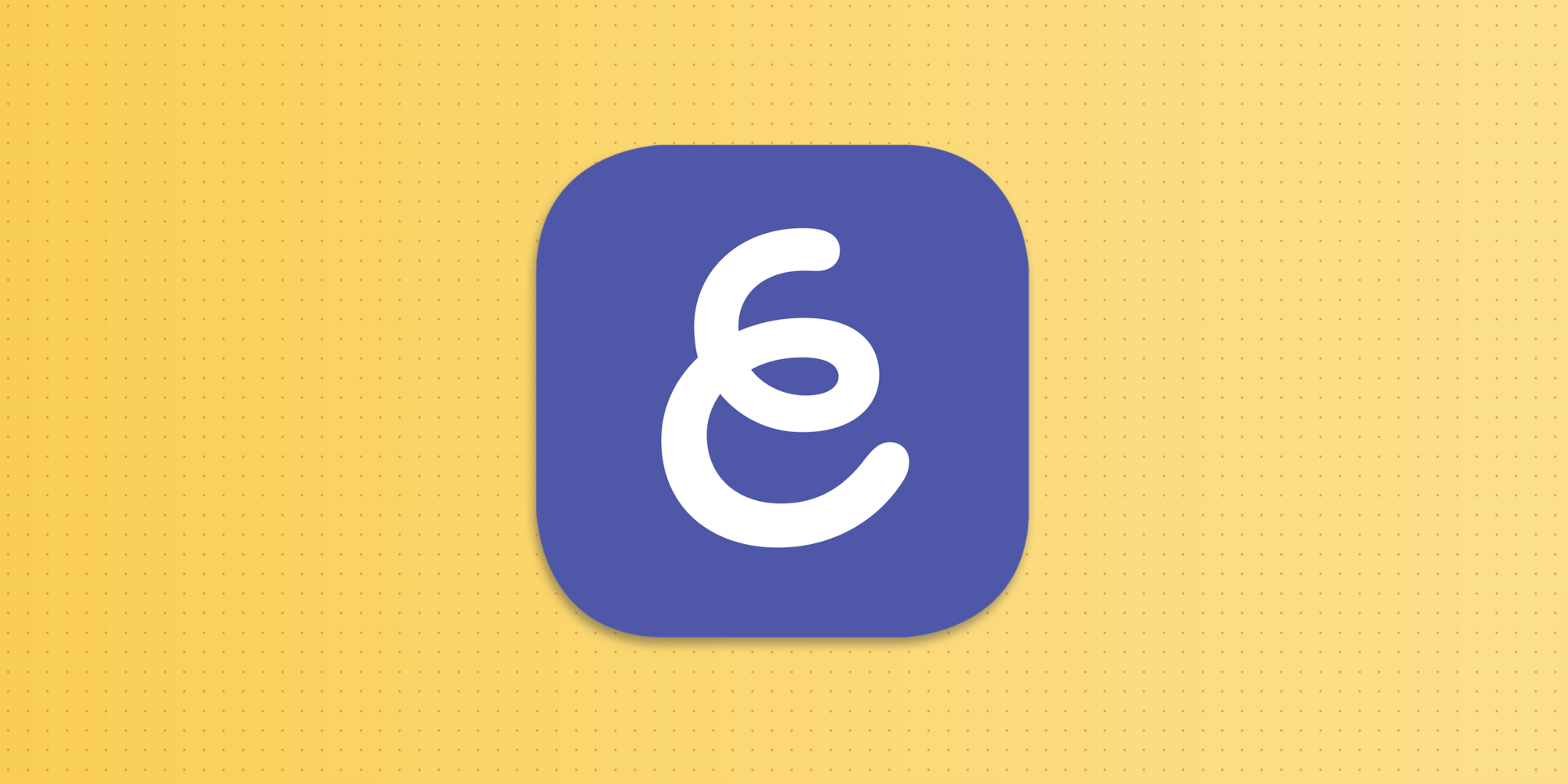How to draw notes? Sketchnoting using a whiteboard

Table of Contents
How to draw notes online? Sketchnoting, or visual notetaking, is a textbook practical application of what’s called dual coding theory, thanks to how it combines both words and images to convey a message. Sketchnoting is based on low-complexity visual outputs, typically a combination of dots, lines, circles, squares and triangles.
How to draw notes, and what is sketchnoting?
Rohde defines sketchnotes as “visual maps combining written words and images while providing structure through variations of frames, dividers, bullets, icons, and connectors such as lines and arrows”. So essentially, these types of notes are visual maps which combine written words and images.
Adding sketches to your daily teaching and learning can help you improve your retention of the materials you work with and your memory more broadly. Sketchnoting can turn traditional notes into meaningful interpretations of discussions, lectures and knowledge gained.
Research and theory on summarizing how to draw notes
According to the book “Classroom Instruction that Works”, in order to effectively summarize, students must delete some information, substitute some information and keep some information. This is a perfect example of how sketchnoting can become a student’s best friend.
Introduce this concept to your students so they can start making their own summaries of materials using sketchnotes. Prepare a short article focussing on one particular subject. Then, ask your students to create a visual note that will describe what they’ve learned.
The sketchnoting process
- Provide a text geared at reading comprehension.
- Ask your students to delete things that are not related to the text.
- Substitute some things but keep the most important data and facts.
- Create a short summary using a sketchnote.
How to draw notes? Getting started with digital sketchnoting is easy.
Regular sketchnotes can be easily transformed into digital sketchnoting. If you want to have access to all your resources in one place in the Cloud, this scenario is for you! Explain Everything Whiteboard allows you to store all your materials conveniently and use them no matter where you are.
Let’s go through the basics of digital sketchnoting. Follow the steps below to create your very first digital sketch note. Yes, there is an app for that!
Open your preferred sketchnoting app
You can get started with Explain Everything (it is free for up to 3 projects).

Create a new project

Choose a project background
Start with different patterns such as a grid, dots, or lines.

Use the “Pen” tool
Change stroke size and color if needed. Start creating digital notes: Write just as you would on physical paper use a digital pen or Apple pencil.

Enhance your sketchnotes
Use geometric shapes or ready-made cliparts available within the “Insert New” tool at the bottom of the toolbar.

Color or highlight
Emphasize key concepts by coloring or highlighting parts of the sketchnote.

What types of visual elements can you use in note-taking and sketchnoting?
Creating a visual note starts with a combination of different elements that enhance sketchnoting. You can mix some of them together.
- lettering and fonts
- symbols, numbers and photos
- colors (focus on using 1-2 colors to make the drawing clear to read)
- use ready-made cliparts and icons from the web.
Additionally you can use our ready-made gallery of shapes, icons and arrows, which can all be found within the “Insert New” tool. If you are a bit of a sketchnoting geek, you can even build your own visual library exactly the way you want.
Sketchnoting examples for students
It is believed that note-taking has a positive impact on a learner’s ability to follow what is being taught and to absorb the information throughout the lesson. If you are still hesitating whether to introduce this solution to your students, here are some key benefits that can help you make a decision.
Improved Comprehension
Sketchnoting encourages students to process information and distill it into key concepts. This process of summarization and simplification enhances understanding and comprehension of complex topics.
Facilitation of Connection Between Ideas
Visual elements in sketchnotes help students see connections between different ideas and concepts. Arrows, lines, and spatial organization contribute to a clearer understanding of how information is related.
Stimulates Creativity
Engaging in sketchnoting exercises encourages creativity and divergent thinking. Students can experiment with different visual representations and styles, fostering a more creative approach to problem-solving.
Reduces Stress
Traditional note-taking methods can sometimes be overwhelming, especially for complex subjects. Sketchnoting allows students to break down information into more manageable visual chunks, potentially reducing stress associated with information overload.
Convinced yet? Get started with Explain Everything Whiteboard and use it as a sketchnoting app in the classroom! Create your free account and start drawing notes right away.

